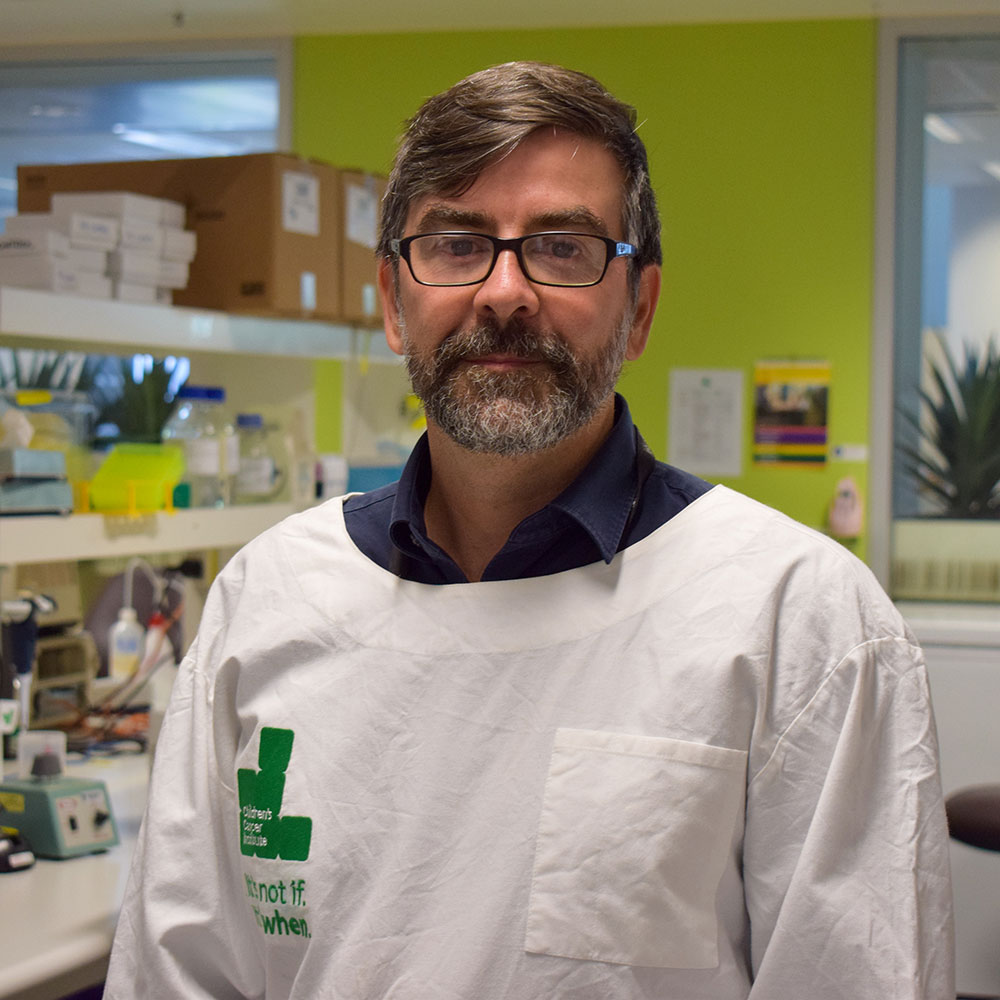
Australian scientists have identified a critical molecular ‘feedback loop’ that helps initiate and drive neuroblastoma, a cancer of the nervous system in children that is triggered in embryonal nerve cells.
This feedback loop massively accelerates cancer development. Fortunately, the research team has identified an experimental drug, currently in clinical trials for adult cancer, with the potential to interrupt the loop and halt tumour progression.
The authors also showed in laboratory models of neuroblastoma that the drug could block the very start of this embryonal cancer, paving the way to possible prevention strategies in the future.
Neuroblastoma is the most common ‘solid tumour’ of early childhood, and is generally diagnosed when the disease is advanced. Around half of all children with neuroblastoma have aggressive tumours, and fewer than half of these patients survive, even after intensive treatment. A potential new drug on the horizon is very good news indeed.
The new study, from Children’s Cancer Institute, found that the drug – known as CBL01371 – used in combination with traditional DNA-damaging chemotherapy agents was much more effective than either drug alone. This was because CBL0137 created a ‘synthetic lethal’ state – by preventing the cancer cells from repairing DNA damage induced by chemotherapy, and so ensuring cell death.
These important findings are published today in the prestigious international journal Science Translational Medicine.
Professor Michelle Haber AM and Professor Glenn Marshall AM, respective leaders of the Experimental Therapeutics and Molecular Carcinogenesis laboratories at Children’s Cancer Institute, worked on two very different aspects of the study.
Dr Daniel Carter and Professor Glenn Marshall focused on the genetic and molecular mechanisms behind the feedback loop, and its interruption by CBL0137.
The feedback loop involves the MYCN gene – already known to be a key driver of neuroblastoma – and a molecule known as FACT, a DNA modifying agent, which is the target of CBL0137.
The Marshall laboratory demonstrated in neuroblastoma cells that FACT not only upregulates the expression of the MYCN gene, but it also prolongs the life of the MYCN protein (the product of the MYCN gene). They found that MYCN directed neuroblastoma cells to produce more FACT, which in turn forced the MYCN levels ever higher, thus driving the cancer.
Professor Michelle Haber, Professor Murray Norris, Dr David Ziegler and Jayne Murray focused on the therapeutic potential of CBL0137, both as a single agent and in combination with other drugs.
“Our laboratory tests tell us that CBL0137 is likely to be very effective against the most aggressive neuroblastomas, and indeed the most aggressive forms of other childhood cancers, and that is very exciting,” said Professor Haber, Executive Director of Children’s Cancer Institute and Head of its Experimental Therapeutics Program.
“But what is particularly exciting is that, in contrast to many other chemotherapeutic agents, CBL0137 does not damage DNA, and it is DNA damage that is responsible for the many unpleasant and serious side-effects that frequently affect children after they are cured of their cancer.
“The drug is currently in Phase 1 clinical trials for adults, which means that safe dosage levels are being tested. Once the adult trials are completed, a Phase 1 trial for children with refractory – or relapsed – neuroblastoma, and also other aggressive childhood cancers, will open in the United States and Australia.”
Professor Glenn Marshall, Director of the Kids Cancer Centre at Sydney Children’s Hospital, Randwick and Head of Translational Research at Children’s Cancer Institute, shares Professor Haber’s excitement.
“We showed that maintenance of high MYCN protein levels is a key issue for this MYCN driven cancer. Neuroblastoma cells often have over 100 copies of the MYCN gene – so they produce an enormous amount of MYCN protein,” said Professor Marshall.
“Yet in addition to the very high levels of MYCN protein, the cancer cells have tools to stop that protein being broken down. That says to me ‘here’s a very good treatment target – it must be the Achilles heel of the cancer’.”
In the embryo, MYCN helps guide the normal development of the sympathetic nervous system by directing the division and migration of primitive nerve cells. At some point in the process, MYCN is switched off and excess cells die off. Neuroblastoma arises when the MYCN gene is not switched off – and some cells continue to divide and proliferate after birth.
For CBL0137 to be effective at preventing neuroblastoma, it would have to be given to all children at birth. “If prevention is to be more than a pipedream, the medicine would have to be completely safe. You would give it once or twice to a newborn, as you give vitamin K, as a way of killing off excess cells that should have died prior to birth,” said Professor Marshall.
The next phase of this project will be a clinical trial of CBL0137 in children at leading children’s cancer centres in the United States and at Sydney Children’s Hospital, Randwick, conducted through the US-based Children’s Oncology Group (COG), the largest children’s cancer study group in the world. This is the first time that a COG trial of this sort would be made available to Australian children.
The clinical trial in both countries will be led by Dr David Ziegler, a senior researcher at Children’s Cancer Institute and Head of Clinical trials at the Kids Cancer Centre, Sydney Children’s Hospital (Randwick).














